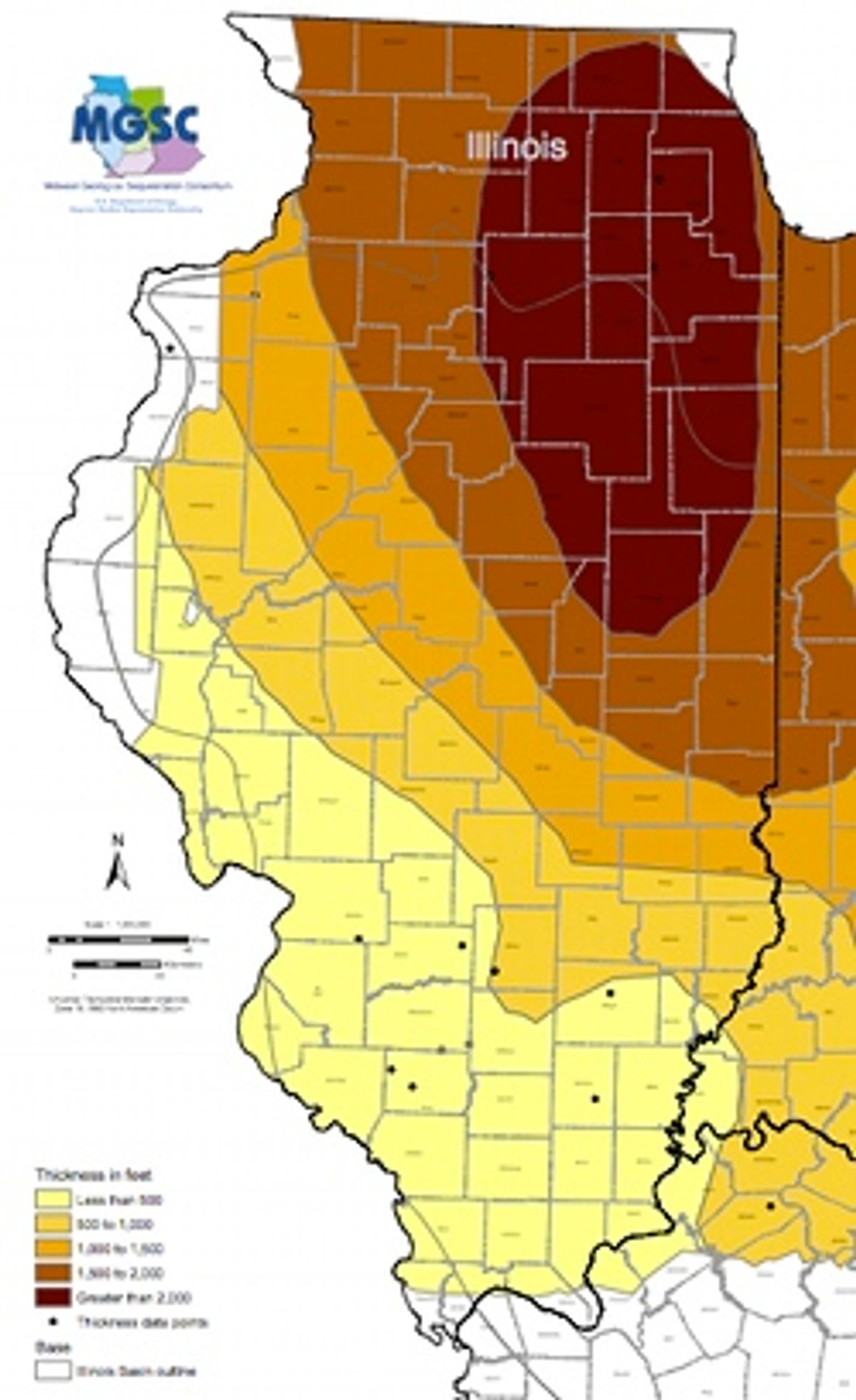The project, which is run by the Illinois State Geological Survey -- part of the Prairie Research Institute at the University of Illinois -- will inject one million tonnes of CO2 over the next three years into a rock formation that lies 7,000 feet beneath the surface. They say there are several layers of shale above the CO2 injection zone that will keep the injected gas in place permanently. The Mt. Simon sandstone has a CO2 storage capacity of somewhere between 11 billion and 151 billion metric tonnes. The CO2 is being captured from a plant producing ethanol.
This project is part of a Department of Energy-funded initiative known as the Regional Carbon Sequestration Partnerships. According to a press release from the MGSC, DOE office of Fossil Energy COO Chuck McConnell said:
"Establishing long-term, environmentally safe and secure underground CO 2 storage is a critical component in achieving successful commercial deployment of carbon capture, utilization and storage (CCUS) technology. This injection test project by MGSC, as well as those undertaken by other FE regional partnerships, are helping confirm the great potential and viability of permanent geologic storage as an important option in climate change mitigation strategies."
The ongoing efforts toward carbon capture and sequestration remain a controversial topic, especially as high-profile projects continue to bow out due to overwhelming costs. Most recently, the Longannet CCS project in Scotland was cancelled, and in the U.S. a major project in West Virginia also bit the dust. Whether these DOE projects aimed at confirming the feasibility of sequestration help push the field along remains to be seen.
(Image of sandstone thickness in Illinois basin via MGSC)
Dave Levitan is the science writer for FactCheck.org, where he investigates the false and misleading claims about science that U.S. politicians occasionally make.




